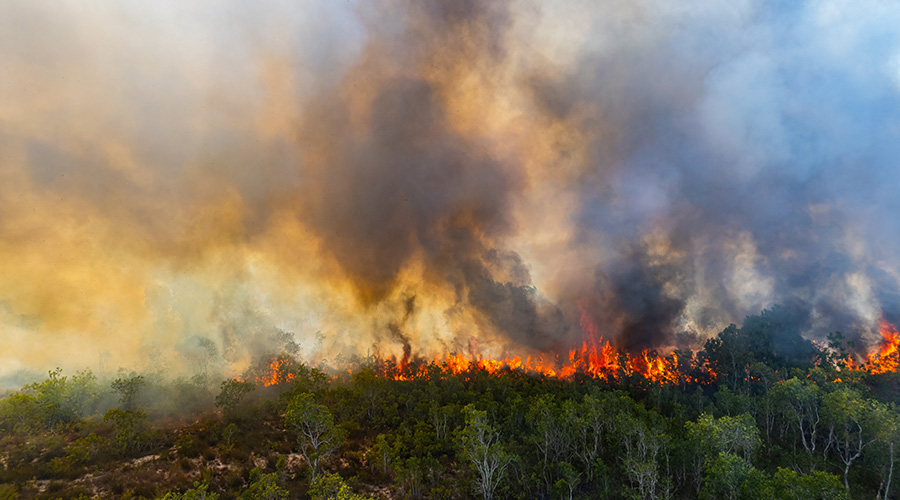
Almost Half of U.S. Breathes Unhealthy Air
Increased number of wildfires contributing to poor air quality. May 13, 2025
By Dave Lubach, Executive Editor
Outdoor air quality has never been more scrutinized by the public than it is now, as wildfires are increasing in intensity and regularity and spreading to areas of the United States that once seemed immune to them.
According to recent reports, the health effects of wildfires are real and aren’t going away anytime soon. They reveal that maintaining a tight building envelope to keep harmful particles out of HVAC systems and buildings in general should continue to remain a priority for facility managers.
The American Lung Association’s (ALA) 2025 “State of the Air” report finds that nearly half of the U.S. breathes in unhealthy levels of air. According to the report, 156 million people are living in areas that received an “F” grade for zone or particle pollution. The main reasons for this according to the report are extreme heat conditions and wildfires.
The 156 million people represent 46 percent of Americans who live in areas that received failing grades. The 26th annual report from ALA grades exposure to unhealthy levels of ground-level ozone air pollution, or smog, and year-round and short-term spikes in particle pollution, or soot, over a three-year period from 2021-2023.
Another recently released report from AccuWeather confirms that wildfires are not going away. The weather forecasting and information company provides data, forecasts and warnings to the public on conditions across the country.
In an update from its data science team, the organization predicts that 7 million to 9 million acres of land to burn across the U.S. this year, continuing a pattern that’s above the historical average.
While heat, drought, wind, lightning and other weather conditions are often cited for sparking wildfires, such as the deadly ones that engulfed much of Southern California in January, AccuWeather emphasizes that 90 percent of all wildfires in the country are caused by humans, including downed powerlines, discarded cigarettes, campfires, fireworks and lawn equipment.
While all humans face threats to the particles spread from wildfires, children in K-12 school districts are one of the more vulnerable segments of the population.
“Children are not little adults; they are distinctly different,” says Dr. Jonathan Tan, a pediatric anesthesiologist and vice chair of analytics and clinical effectiveness at Children’s Hospital Los Angeles. “Children are still developing and breathe more air per body weight than adults do. Kids also tend to spend more time outside than adults, which can increase the exposure to air quality.”
Dave Lubach is the executive editor for the facility market.
Next
Read next on FacilitiesNet












